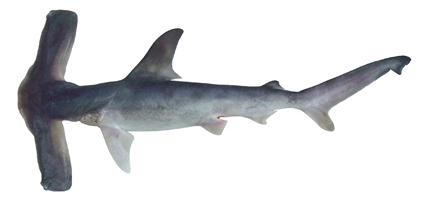Whale Sharks Slide Towards Extinction
New International Union for Conservation of Nature (IUCN) Red List assessments reveal that growing human pressures on whale sharks are putting them at an increasing risk of extinction. Whale sharks are now listed as Endangered.
Numbers of whale sharks (Rhincodon typus), the world’s largest living fish, have more than halved over the last 75 years as these slow-moving sharks continue to be fished and killed by ship propellers.
The largest confirmed whale shark had a length of 12.65 meters (41.5 feet) and a weight of about 21.5 tons (47,000 pounds). Whale sharks have a mouth that can be 1.5 meters (4.9 feet) wide, containing 300 to 350 rows of tiny teeth and 10 filter pads which it uses to filter feed.
Although conservation action in India, the Philippines and Taiwan has ended large-scale fishing of whale sharks in these countries, they continue to be fished in other locations, including southern China and Oman. As whale sharks and tuna are often present together, they are frequently caught by fishers targeting tuna.
“While international whale shark trade is regulated through the species’ listing on the Convention on International Trade in Endangered Species (CITES), more needs to be done domestically to protect whale sharks at a national level,” says Simon Pierce, lead Red List assessor, member of the IUCN Species Survival Commission (SSC) Shark Specialist Group, and co-founder of the Marine Megafauna Foundation.
“It is alarming to see such emblematic species slide towards extinction,” says Jane Smart, Director of IUCN's global species program. “These new IUCN Red List assessments emphasize how urgent it is for the conservation community to act strategically to protect our planet’s incredible diversity of life. The world’s oceans and forests will only continue to provide us with food and other benefits if we preserve their capacity to do so.”
 Unregulated fishing is also behind the fast-falling numbers of the distinctive winghead shark (Eusphyra blochii), whose morphology makes it extremely vulnerable to entanglement in fishing nets. This species of hammerhead shark has moved from Near Threatened to Endangered on the IUCN Red List.
Unregulated fishing is also behind the fast-falling numbers of the distinctive winghead shark (Eusphyra blochii), whose morphology makes it extremely vulnerable to entanglement in fishing nets. This species of hammerhead shark has moved from Near Threatened to Endangered on the IUCN Red List.
Although it is difficult to say how many individuals remain, recent surveys of fish markets in Indonesia found only one winghead shark among approximately 20,000 sharks of other species. A similar pattern is expected throughout Asian countries where coastal fishing is intense and largely unregulated.
A full update to the IUCN Red List of Threatened Species, including assessments of many other species, will be announced at the IUCN World Conservation Congress 2016 to be held in Hawai’i from September 1 to 10.
The IUCN Congress is expected to see key decisions on improving the governance of the high seas under the United Nations Convention on the Law of the Sea.
